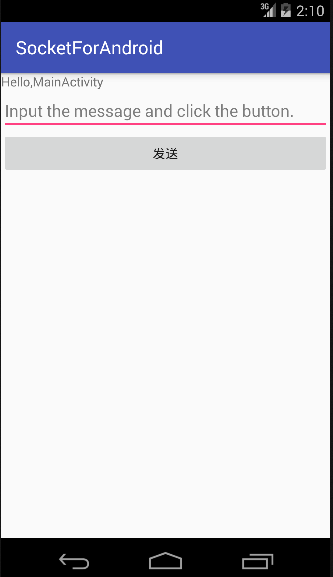編輯:關於Android編程
本文包含3種隱藏頂部狀態欄及標題欄和一種隱藏Android 4.0平板底部狀態欄的方法,分享給大家供大家參考,具體內容如下
方法一
public class MainActivity extends Activity
{
@Override
protected void onCreate(Bundle savedInstanceState)
{
super.onCreate(savedInstanceState);
// 隱藏標題欄
requestWindowFeature(Window.FEATURE_NO_TITLE);
// 隱藏狀態欄
getWindow().setFlags(WindowManager.LayoutParams.FLAG_FULLSCREEN,
WindowManager.LayoutParams.FLAG_FULLSCREEN);
setContentView(R.layout.activity_main);
}
}
方法二
<!-- 同時隱藏狀態欄和標題欄 -->
<activity
android:name="com.ysj.demo.MainActivity"
android:theme="@android:style/Theme.NoTitleBar.Fullscreen"
android:label="@string/app_name" >
<intent-filter>
<action android:name="android.intent.action.MAIN" />
<category android:name="android.intent.category.LAUNCHER" />
</intent-filter>
</activity>
方法三
<!-- Application theme. --> <style name="AppTheme" parent="AppBaseTheme"> <!-- All customizations that are NOT specific to a particular API-level can go here. --> <!-- 隱藏狀態欄 --> <item name="android:windowFullscreen">true</item> <!-- 隱藏標題欄 --> <item name="android:windowNoTitle">true</item> </style>
注:
1、方法一中的兩段代碼要在setContentView()之前。
2、方法二只能同時隱藏狀態欄和標題欄。
3、方法一和方法二都只應用於單個Activity。方法三應用於整個程序。
對於運行Android 4.0以上系統的平板電腦,以上三種方法都不會隱藏屏幕下方的狀態欄,須做如下處理。
public class StartupActivity extends Activity
{
@Override
protected void onCreate(Bundle savedInstanceState)
{
super.onCreate(savedInstanceState);
setContentView(R.layout.activity_startup);
/*
* 隱藏運行Android 4.0以上系統的平板的屏幕下方的狀態欄
*/
try
{
String ProcID = "79";
if (android.os.Build.VERSION.SDK_INT >= android.os.Build.VERSION_CODES.ICE_CREAM_SANDWICH) ProcID = "42"; // ICS
// 需要root 權限
Process proc = Runtime.getRuntime().exec(new String[] { "su", "-c", "service call activity " + ProcID + " s16 com.android.systemui" }); // WAS
proc.waitFor();
}
catch (Exception ex)
{
Toast.makeText(getApplicationContext(), ex.getMessage(), Toast.LENGTH_LONG).show();
}
}
@Override
protected void onDestroy()
{
// TODO Auto-generated method stub
/*
* 恢復運行Android 4.0以上系統的平板的屏幕下方的狀態欄
*/
try
{
Process proc = Runtime.getRuntime().exec(new String[] { "am", "startservice", "-n", "com.android.systemui/.SystemUIService" });
proc.waitFor();
}
catch (Exception e)
{
e.printStackTrace();
}
super.onDestroy();
}
@Override
public boolean onCreateOptionsMenu(Menu menu)
{
// Inflate the menu; this adds items to the action bar if it is present.
getMenuInflater().inflate(R.menu.startup, menu);
return true;
}
@Override
public boolean onOptionsItemSelected(MenuItem item)
{
// TODO Auto-generated method stub
switch (item.getItemId())
{
case R.id.action_exit:
finish();
break;
}
return true;
}
}
由於沒有了狀態欄,須在程序中提供退出程序的方法。
希望本文所述對大家學習Android軟件編程有所幫助。
 UC-Android逆向工程師面試第2題分析
UC-Android逆向工程師面試第2題分析
一、簡介這個題目是別人面試UC優視集團Android逆向工程師一職位的面試題,相比較前面的面試題1,增加了一些難度。 二、題目分析1.使
 Android三種網絡通訊方式及Android的網絡通訊機制
Android三種網絡通訊方式及Android的網絡通訊機制
Android平台有三種網絡接口可以使用,他們分別是:java.net.*(標准Java接口)、Org.apache接口和Android.net.*(Android網絡接
 Android總結之WebView與Javascript交互(互相調用)
Android總結之WebView與Javascript交互(互相調用)
前言:最近公司的App為了加快開發效率選擇了一部分功能采用H5開發,從目前市面的大部分App來講,大致分成Native App、Web App、Hybrid App三種方
 Android中Socket的應用分析
Android中Socket的應用分析
本文實例分析了Android中Socket的應用。分享給大家供大家參考,具體如下:Android 提供的常用的網絡編程包括針對TCP/IP協議的Socket通信。Sock